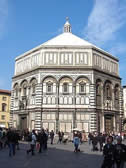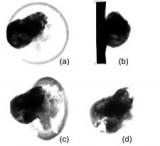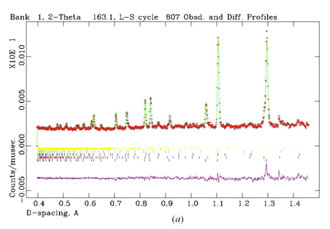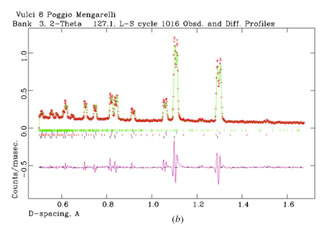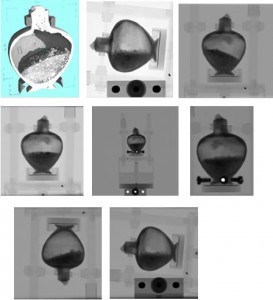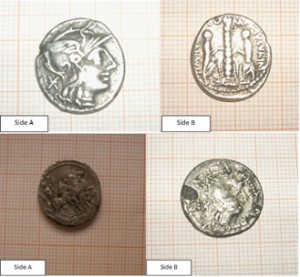Collaborative research among scientists from Nast Centre, CNR , Università di Milano-Bicocca and Cultural Heritage Institutions – Italian Ministry for Cultural Heritage, Opificio delle Pietre Dure , Museo Nazionale di Villa Giulia , Museo Civiche Raccolte Archeologiche e Numismatiche di Milano have investigated archaeological artefacts via integrated neutron techniques.
Neutron techniques are applied to cultural heritage artifacts to ‘unveil secrets’ in ancient objects. Measurements are devoted to study structural characteristics like composition, presence of alteration, crusts, inclusions, structure of the bulk, manufacturing techniques and presence of those elements which give us an overall fingerprint of the object’s characteristics. Neutrons penetrate through objects without substantial attenuation, a quality which makes them ideal for bulk, non-destructive testing. Neutron Diffraction (ND) is a method to study the crystal structure of the object. Components and their crystal structure can be detected. Neutron Tomography (NT) is a method of testing the internal structure of an object. A neutron beam impinging onto any heterogeneous object is differently transmitted depending on thickness, density, chemical composition and total cross section of the material along the line of sight. Recording the transmitted beam is possible to reconstruct the internal feature of the studied object. Prompt Gamma Activation Analysis (PGAA) and the newly Prompt Gamma Activation Imaging (PGAI) use thermal neutrons to detect and map the elemental composition of the irradiated samples. Neutron Resonance Capture Analysis (NRCA) use epithermal neutrons to detect elements and their isotopes in the irradiated sample. All these techniques are used as success applied to the study of cultural heritage objects. Following some studied cases.
- Integrated neutron diffraction and imaging of Lorenzo Ghiberti relief from the Battistero di Firenze
- Composition and corrosion phases of Etruscan Bronzes from Villanoviano Age
- Neutron Tomography of Etruscan vase
- Neutron diffraction study on ancient silver coins
Integrated neutron diffraction and imaging of Lorenzo Ghiberti’s relief from the Battistero di Firenze
|
|
This work is addressed to integrated neutron techniques for the study of an artifact, a gilded bronze relief, part of the most monumental Door, The Gates of Paradise, located at the Battistero di Firenze, masterpiece of the Florentine Renaissance by Lorenzo Ghiberti. The relief presents critical aspects regarding state of conservation and shows a re-melting whose extension and composition were unknown. The analysis was performed using Prompt Gamma Activation Imaging to reconstruct the elemental composition map, Neutron Diffraction and Radiography for an insight to manufacturing technique, and Neutron Resonance Transmission to map the gold layer distribution under the pollution deposits. |
| Prompt Gamma Activation Imaging (PGAI) and Neutron Radiographies PGAI use thermal neutrons to map the elemental composition of the samples. Prophet Head contains: Cu, Au, Hg, Cl in the uncleaned part; Cu, Au, Hg in the area cleaned via Rochelle salts and Cu, Au, Hg and Cl in the area cleaned via laser ablation. Cl presence in the laser-cleaned area is relevant: Cl compounds represent a dangerous component as far as the corrosion processes is concerned. High resolution neutron radiographies provided the extension and position of the re-melting area in the relief. This suggests that, because the original melting was not satisfactory, the sculptor made a second one. |
| Neutron Diffraction (ND) analysis
ND uses neutrons to study the crystal structure of the sample. In this case was devoted to measure cavities and inhomogeneity in the bulk of the sample, as well as bulk phase composition and residual strain distribution. Results: 1) re-melting was only a filler material without any particular treatment, primary melting suffered an homogenization process 2) a 3D map of the cavity created during second melting was created 3) it was demonstrated that the face and beard region were part of the second melting. Re-melting seems to have been realized by the artist to give thickness to the relief and make it much more hard-wearing. |
|
References: 1) G. Festa, C. Andreani, M. P. De Pascale, R. Senesi, G. Vitali, S. Porcinai, A. M. Giusti, R. Schulze, L. Canella, P. Kudejova, M. Mühlbauer, B. Schillinger and the Ancient Charm Collaboration, ‘A non destructive stratigraphic and radiographic neutron study of Lorenzo Ghiberti’s reliefs from Paradise and North doors of Florence Baptistery.’ Journal of Applied Physics, 106, N.4 (2009) 2) G. Festa, R. Senesi, M Alessandroni, C. Andreani, G. Vitali, S. Porcinai, A. M. Giusti, T. Materna, A. Paradowska, ‘Non destructive neutron diffraction measurements of cavities, inhomogeneities and residual strain in bronzes of Ghiberti’s relief from the Gates of Paradise’, Journal of Applied Physics in publication (2011) |
Composition and corrosion phases of Etruscan Bronzes from Villanoviano Age
| Etruscan bronzes coming from the Museo Nazionale di Villa Giulia, Rome, Italy were studied by Neutron Diffraction. The aim of the study was to collect information related to the main composition of the artefacts, the presence and nature of alterations or inclusions and the bulk structure to define the corrosion state, the past environments and the physical/chemical events that transformed the objects into partially corroded matrix. The experiments were carried out at ISIS spallation neutron source. |
|
The bronze vases are part of an Etruscan collection discovered in the necropolises of Osteria-Poggio Mengarelli and Cavalupo in the outskirts of Vulci (Viterbo, Italy). The samples, 14 fragments, were analysed with regard to chemical-phase compositions and corrosion products. Bronze is composed of copper, tin (Cu, 85-95%, Sn, 5-15%) and small quantities of other metals. The determination of the exact copper/tin/lead relative composition provides important information on the working process and technologies adopted and, indirectly, on the authenticity of the artefacts. Results obtained from ND investigation of objects show that 60% to 95% by weight is un-corroded alloy that presents a composition (Cu = 90±4%) which is typical of low-tin ancient bronzes thus supporting the authenticity of the samples. ND measurements also provided information about working methods of bronzes through the analysis of relative bronze peaks width Dd/d as a function of d-spacing: annealing and two different types of cooling dynamics (fast and slow) are present while hammering could also be present. Furthermore data analysis showed that the combination of corrosion products in the single samples is in agreement with possible environmental conditions in which the objects were in contact. Most of the samples were buried. Some of these were in contact with salted water. This could come from seawater percolation or simply salted food contained in the vases. Additionally it has been possible to trace probable quantitative values for the concentration of certain environment components such as CO2 and NaCl present in the tombs. |
|
Reference:
G. Festa, P. A. Caroppi, A. Filabozzi, C. Andreani, M. L. Arancio, R. Triolo, F. Lo Celso, V. Benfante, S. Imberti ‘Composition and corrosion phases of Etruscan Bronzes from Villanovan Age’, Measurements Science and Technology, 19, 034004 (2008).
Neutron Tomography of Etruscan vase
| A neutron tomography study was performed at the Antares experimental station of the FRMII reactor (Garching, near Munich) on an Etruscan little vase preserved at the Civiche Raccolte Archeologiche e Numismatiche (Milan, Italy). This is and Aryballos vase of Proto-Corinthian style (6-7th BC) and comes from the necropolis of the Banditaccia, in Cerveteri. It is made in ceramic material (5.9 cm height), with a globular body and a decoration with large and horizontal brown bands. It has an original cap still sealed and intact and the content is unknown. Aim of the study was to non-invasively observe the internal features of a sealed vase. The analysis shows that the content is a fine powder well-preserved. |
| Neutron Tomography results of an Etruscan Vase ( |
Research team:
E. P. Cippo1, G. Gorini1, R. Cattaneo1, G. Festa1,2, C. Andreani2
1 Università di Milano-Bicocca, Milano, Italy
2 Dipartimento di Fisica, Università degli Studi di Roma Tor Vergata, Roma, Italy
Neutron diffraction study on ancient silver coins
A neutron diffraction study was performed on a series of ancient silver coins belonging to the Strait of Messina area (264- 241 b.C. e 218-202 A.D.). The aim of the study was to evaluate authenticity and, accordingly, to bear out an hypothesis of historical forgery.
The discovery of an ancient artifact often raises a variety of questions such as the correct determination of its historical and cultural time-frame, the place and method of production, the choice of treatments and conditions for restoration and preservation. In this field, new perspectives open up with the use of neutron-based techniques.
Neutrons, in fact, show a high penetration power through thick coatings or probable corrosion layers present in the sample, and provide information from the bulk rather than from surface areas.
The period in which silver coins where introduced in Roman era is not exactly known but it is reasonably dated in the period of the Punic Wars (first: 264 − 241 BC and second: 218 − 202 BC), series of three wars fought between Rome and Carthage. In that period a big amount of money became necessary to cover war-expenditures. During this century a very large number of ‘fakes’ coins were used. It is not clear if they were made by the Roman Republic or they are forger work. This phenomenon regards, in particular, silver coins. The ‘authentic’ and the ‘fakes’ coins can be tell apart by eye because the ‘fakes’ have a core by copper or lead and an external layer made in silver. All the samples are republican-roman money delivered by Roma’s mint.
| The objects under study have been kindly furnished, within a long collaboration with IPCF-CNR, from the foundation Piccolo Museo S. Paolo in Reggio Calabria (Italy), here a very valuable numismatic collection belonging to a period ranging from the ancient Magna Grecia to nowadays.Diffraction measurements were used in the characterization of the quantitative composition of the bulk of the coins. All the elemental analysis measurements have been performed at the INES station (Rutherford Appleton Laboratory, UK) and a complete phases distribution is provided. |
The analysis of the diffraction measurements on the ancient coins shows the difference in composition: one of these is composed by only silver and it can be hold as authentic, instead two other coins are composed by a nucleus of copper with a cuprite patina and a silver covering and are clearly fakes.
Research team:
F. Aliotta1, L. Bartoli2, D. Castrizio3, G. Festa4, R. Ponterio1, G. Salvato1, C. Vasi1
1 CNR – Istituto Processi Chimico-Fisici, Salita Sperone Contrada Papardo 98158 Faro Superiore Messina, Italy
2 CNR – Istituto di Fisica Applicata 50019 Sesto Fiorentino, Italy
3 Dipartimento di Scienze dell’Antichità, Polo Annunziata Università degli Studi di Messina, Italy
4 Dipartimento di Fisica, Università degli Studi di Roma Tor Vergata, Roma Italy



